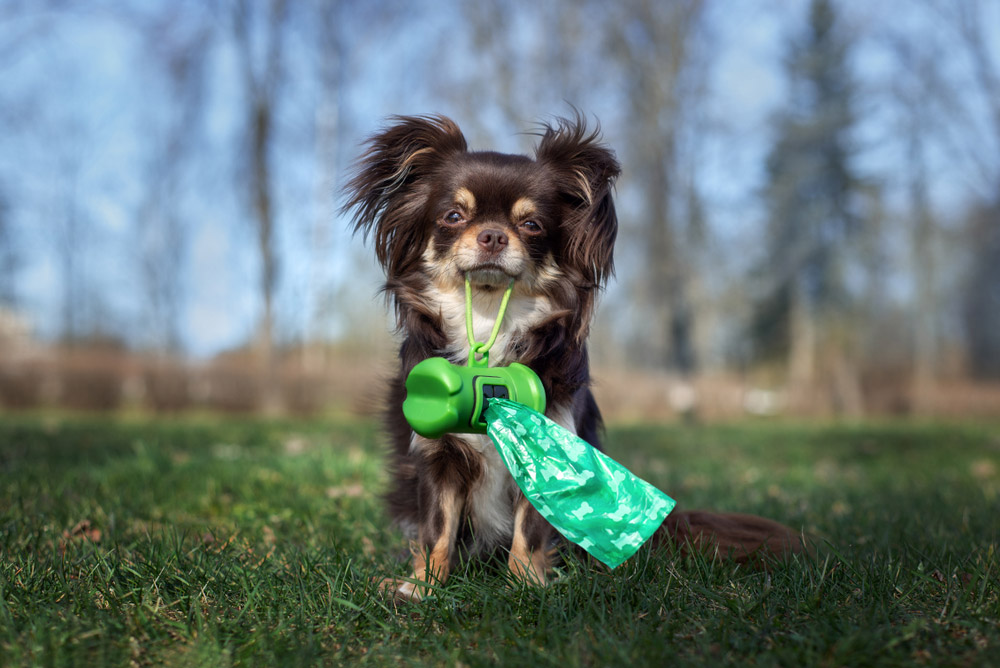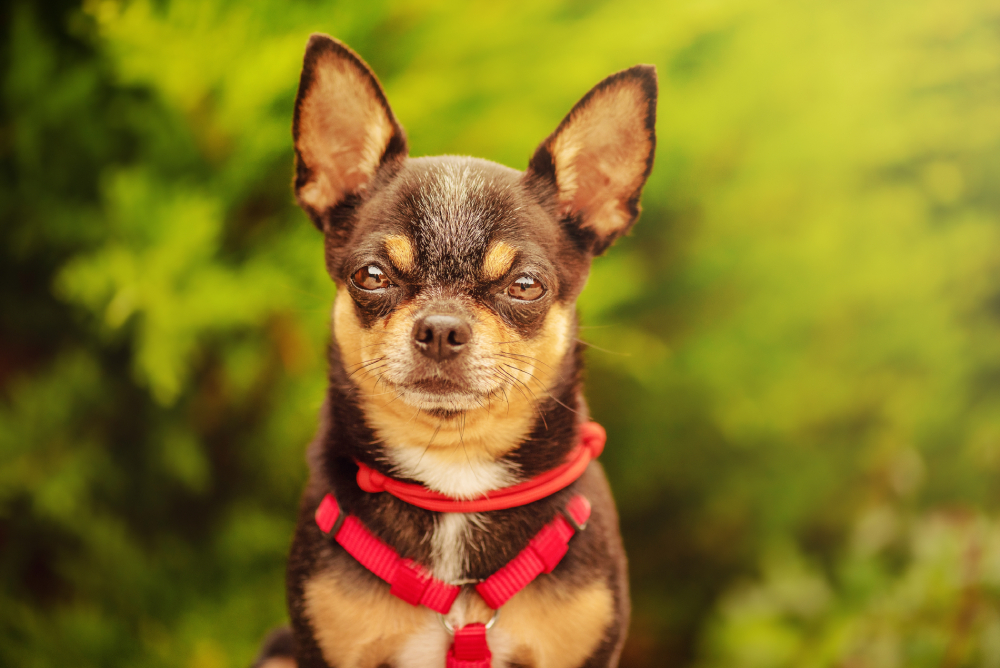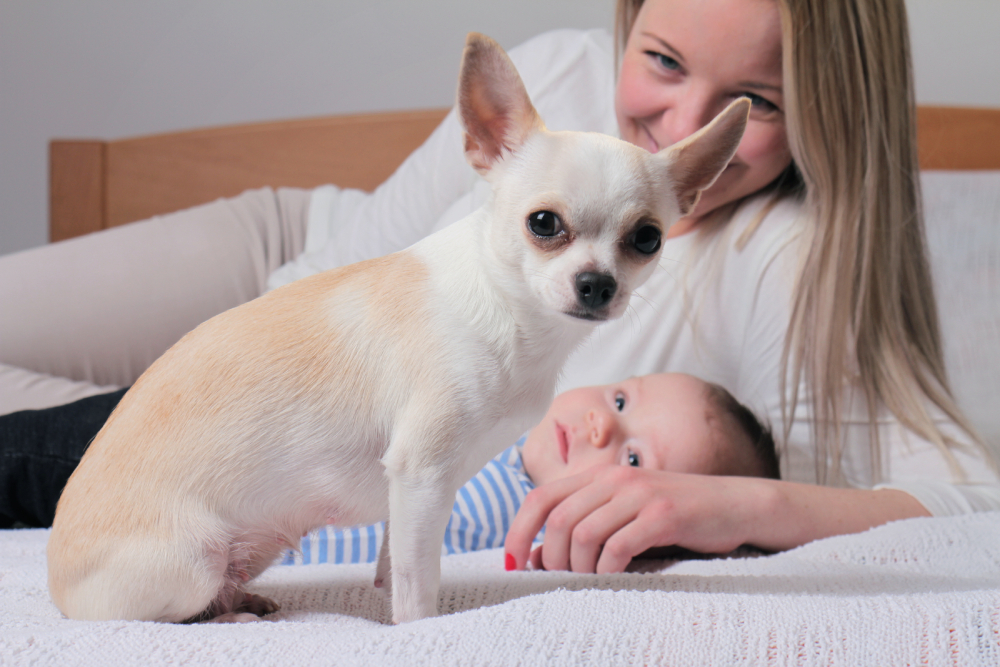
The Chihuahua is the ultimate city dog, an adaptable, pocket-sized companion that fits in almost anywhere. Owners love them for their oversized personalities, which make them a daily delight, even if they have a bit of cheekiness. The Chihuahua is one pet that owners often don’t expect to be super-trainable, instead focusing on their more endearing traits to justify their preference.
Does that mean you should lower your expectations for your Chihuahua? Absolutely not! After all, a dog is a dog, and each has, to some degree, a knack for cooperation with their owner. While it might take clever problem-solving, training your Chi can be a fulfilling way to bond with them and impress anyone you meet. Set your dog up for success by following these 10 tips and tricks to train a Chihuahua.


The 10 Tips on How to Train a Chihuahua
Regardless of your training focus or your dog’s unique personality, the most crucial aspects of training are persistence and positivity. Like any dog, Chihuahuas constantly learn, build associations, and use past experiences to guide decisions.
By staying optimistic and consistent in your lessons, they will stay more attached and engaged with you, making training faster and more straightforward.
1. Work With Friends Who Have Dogs and Control Interactions
Socialization will be crucial when you bring your Chihuahua home from the breeder or shelter. Even if they haven’t had all their shots, a week after they’ve had at least their first round of vaccines, you can let them meet familiar dogs in controlled settings to teach them proper behaviors and to become comfortable with other animals.
Chihuahuas may be little, but they aren’t afraid to get aggressive with dogs of any size. Providing as many positive experiences with other dogs as possible from a young age will reduce territoriality and possessiveness and promote calm, outgoing, and accepting temperaments.
Find friends who have socialized, well-behaved, and vaccinated dogs to set up playdates. Alternatively, take your dog to puppy socialization classes, where they can meet other dogs on their level in a safe environment.
2. Create a Dependable Daily Schedule
Life will likely be a bit more hectic with your puppy during the first few weeks, as you work to keep them safe from infections until they get all their vaccinations and can be exposed to diverse environments. The eventual goal will be to create a consistent routine, with on-schedule feeding, walking, play, and alone times.
Creating certainty like this will make your Chi more relaxed and confident in their relationship with you. They’ll know what to expect and how to meet your expectations to make both of you happy. There will be more trust with a rigid, recurring daily flow, fostering a richer bond and fewer challenges in getting your dog to cooperate.


3. Crate Train Your Chihuahua
Crate training is an excellent tool for potty training and separation anxiety. A crate is a rewarding area where your Chihuahua can feel safe and comfortable while dissuading them from peeing indoors, as dogs don’t like to eliminate where they sleep.
Get a crate just big enough for your Chihuahua to stand, turn around, and lie down comfortably. Set it up with soft bedding, high-value toys, and treats to make them want to use it. Praise and reward your dog for entering and settling into the crate when introducing it.
Crate your dog during the day, especially when you can’t keep an eye on them, taking them out frequently for play and potty time. As a puppy, they can only manage 2–3 hours at most, but adult Chis can stay there for up to 8 hours. This doesn’t mean they should stay there every day, but it’s a resource for certain occasions. Put the crate in a common area during the day to keep your dog around others, but move it to your room at night so they can stay close.
4. Potty Train Consistently
Potty training may seem like one of the trickier aspects of raising a Chihuahua. Their small size makes it hard to monitor their behaviors (and sometimes find them in the house), and their sensitivity to stress can cause undue accidents.
Crate training will help your efforts since you can keep an eye on your dog, and they’ll be less likely to pee in their sleeping space. Your potty schedule will be crucial. Generally, dogs can hold urine for about an hour for every month of life (e.g., a 2-month-old puppy can hold it for 2 hours). Due to their size, Chihuahuas may have to go more frequently, which you’ll figure out as you get used to your dog’s habits.
How to Potty Train Your Chihuahua
Create a consistent potty schedule so your dog knows what you expect of them. The following are some of the critical times you must take your Chihuahua out:
- After play
- After naps
- 15 minutes after eating and drinking
- 10 minutes before you leave for the day
- 15 minutes before bed
Pick a specific place outside in a low-distraction environment where your dog can pee and poop. Praise them profusely, and give them treats immediately after they do their business. After doing this several times, you can add a command like “Go potty!” before they pee.
Don’t punish or yell at your dog for indoor accidents. They won’t learn any lessons and may become more fearful of you, thus harming your bond. A firm “No” will suffice. Clean any accidents thoroughly with an enzyme cleaner to remove the scent, or your Chi may be motivated to continue eliminating inside.


5. Take Your Chihuahua to Different Places Immediately
Regardless of when you get your Chihuahua, working on socialization is crucial in your home and public places to develop their manners and a positive attitude.
Take your Chihuahua to as many places as possible to meet diverse groups in different settings. Ensure the experiences are positive, stress-free, and confidence-boosting. Over time, your dog will generalize their good behavior and positive perceptions of others.
If you’re worried about infection risks for a young Chi that hasn’t had all their shots, limit the types of places you’ll take them, and use a sufficient carrying option. Fortunately, Chihuahuas are lightweight and portable. Exposing them to people, sounds, smells, and sights in the pet shop or grocery store is easy enough from the safety of a sling carrier or backpack.
6. Don’t Forget Their Size
It’s easy to get carried away in the excitement and want to continue offering treats to your Chihuahua for their training wins. However, these dogs tend to gain weight easily, partially due to owners not realizing how little their pets are supposed to eat to stay within their daily calorie allowance. So, it is best to plan accordingly: Set out your Chi’s total daily treats allowance in the morning, and then divide it into each training session. This will help guarantee that you do not overfeed your tiny pup.
Remember, at least 90% of your Chihuahua’s calories should come from a complete and balanced dog food and only 10% from their treats. Using kibble pieces or bits of their food as a reinforcer is always a possibility if this works for them.
7. Scope Out Your Neighborhood and Walk Your Dog
Chihuahuas will be ready for walking once they get all their vaccinations (typically by week 16), but it is best to wait at least an extra week after the last shot. Until then, you can do some preliminary work by walking a few different routes in the neighborhood to scope out hazards or potential issues that might affect the experience.
Look at factors like other dogs in the area, high-traffic places, and various stimuli that may affect your dog and your ability to train them. With a few outings, you can determine when and where you should walk your dog, giving you a starting point for building a schedule for them.


8. Use a Front-Clip Harness for Walking
A Chihuahua’s pulling habit rarely makes walking difficult since they’re so small, but it can cause damage to their fragile neck. For safety and training purposes, use a front-clip harness for walks.
A well-fitting front-clip harness will apply pressure to the body and redirect your Chihuahua if they pull, helping to reduce the behavior. Use this for walks, and keep a flat or martingale collar for when you go out for quick potty breaks.


9. Walk Your Chihuahua at Least Twice Daily
Walking is an easy way to knock out training, socialization, and exercise at once, so you should make a few short strolls daily once your dog is fully vaccinated. Work on pulling and focus, rewarding them for maintaining a loose leash and checking in on you for direction.
10. Supervise Children Closely
Training children is as vital as training your Chihuahua if you want your dog to develop docile behaviors around others. Chihuahuas can get snappy when mishandled, which is all too easy with small kids who don’t know any better. Always supervise children with your dog, coaching them on proper handling before petting your dog, offering them treats, or playing with them.




Final Thoughts
Training a Chihuahua is surprisingly effortless when you make it consistent, straightforward, and fun. Although they can have feisty personalities, they also adore their relationships with their owners, making decisions that reward themselves and please their handlers. When you harness that motivation with positivity and love, your dog’s cooperation will become a natural habit.
Featured Image Credit: LNbjors, Shutterstock




